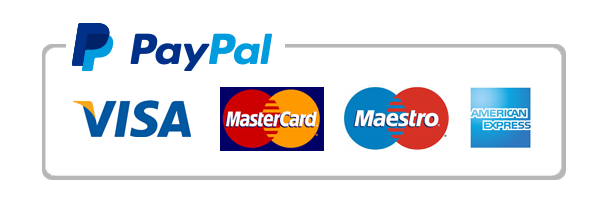1
Week 7: Change Project Final Paper
Your final paper will encompass all assignments you have completed thus far. At this
point, you will have submitted each section individually and a comprehensive rough
draft. You have received extensive feedback. An attempt to incorporate all previous
assignment feedback should be evident.
The paper should be between 20 and 30 pages in length, not including the cover page,
references, and any appendices. It must follow the current APA manual style and
format. Each section of the paper should be clearly identified using proper headings.
The final paper should be professionally written in a manner suitable for publication.
NURS_691B_DE – NURS 691-B Rubric: Culminating Experience Evidence-Based
Change Project Paper Rubic (Final))
NURS_691B_DE – NURS 691-B Rubric: Culminating Experience Evidence-Based Change Project Paper
Rubic (Final))
Criteria Ratings Pts
This criterion is linked to a
Learning Outcome
Introduction and
Background
15 to >12.3 pts
Meets Expectations
The change project topic is introduced. All
background information is included. Project
importance within the field or significance for
the designated facility is described.
15 pts
2
This criterion is linked to a
Learning Outcome
Problem Identification and
Description in PICOT
Format
15 to >12.3 pts
Meets Expectations
Presents a thorough and insightful analysis of the
chosen topic/problem. Describes the problem
thoroughly, including the target population
description and history/background information
at the assigned clinic or hospital. The significance
and applicability to nursing is included and well
presented. Includes an appropriate topic
identification related to an advanced practice
nursing issue or practice problem of concern.
Population is fully defined and present in the
research question. Includes specific
interventions, identifies comparisons, and
presents appropriate outcomes in a timely
manner for the question. Overall, the question is
well-built using the PICOT format.
15 pts
This criterion is linked to a
Learning Outcome Critical
Appraisal/Literature
Review
18 to >14.76 pts
Meets Expectations
The minimum requirement of peer-reviewed
articles, books, or limited non-research literature
(tool kits or standardized procedures) are
present. Literature is supported by scientific
evidence that is credible and timely. Subtopics
are used to support the main topic. In-text
citations are present and correctly formatted.
Presents a thorough and insightful analysis of
significant findings related to the change project
topic. Ideas are synthesized and professionally
sound and creative. Insightful and
comprehensive conclusions and solutions are
present.
18 pts
3
This criterion is linked to a
Learning Outcome Project
Aims, Values, and Desired
Outcomes
18 to >14.76 pts
Meets Expectations
The project, aims, values, and desired outcomes
are well-developed. They are clear and thorough.
Aims include examples of projected features and
functions. Values include implementation
benefits for specific stakeholders. Desired
outcomes state the purpose, have a quality
focus, and describe the benefits that will occur
as a result of implementation.
18 pts
This criterion is linked to a
Learning Outcome
Theoretical Framework
18 to >14.76 pts
Meets Expectations
Identifies independent theories or conceptual
models that relate to the change project topic
and describes how they will be applied to the
change project. Thoroughly discusses how each
element of the phenomenon applies to the
framework. Clearly applies each element of the
theory to the elements of the phenomenon
under study. Develops the rationale for the
sample selection criteria, and expertly discusses,
analyzes, and critiques pertinent research that
uses the framework.
18 pts
4
This criterion is linked to a
Learning Outcome
Intervention
18 to >14.76 pts
Meets Expectations
Provides keen insight into obstacles and
proposes sound, creative solutions or
interventions based on the literature review
findings. Expertly compares other views on the
problem and solutions with detail. Uses
examples to thoroughly address the FNP role in
the intervention and discusses implications for
clinical practice. Thoughtfully discusses the
implications of the change project and its
significance to the nursing profession and filling
gaps in knowledge. Accurately categorizes and
thoroughly explains specific methods of data
collection to be used. Explains in detail how data
will be analyzed and used. Provides a sound
justification for subject selection and sampling
procedure. Accurately and thoroughly describes
potential limitations to data collection and
control.
18 pts
This criterion is linked to a
Learning Outcome
Recommendations and
Conclusion
18 to >14.76 pts
Meets Expectations
Provides an insightful and thorough summary of
the project, main points, and details the
significance of the project to the advanced
practice nursing profession. Provides detailed
and creative recommendations for future
research and implications for clinical practice.
Discusses limitations of the study in detail.
Suggests specific directions for future research.
Insightfully considers changes in theoretical
construct and provides reasonable and creative
suggestions for public policy and/or changes in
educational practice. Expertly ties the theoretical
framework to the overall product.
18 pts
5
This criterion is linked to a
Learning Outcome
Mechanics and APA
30 to >24.6 pts
Meets Expectations
Writing is clear, concise, formal, and organized.
Information is well organized and clearly
communicated. The assignment is free of spelling
and grammatical errors. All the requirements
related to format, length, source citations, and
layout are followed. A complete reference page is
included and formatted using correct APA format. If
applicable, appendices and tables are complete and
appropriate.
30 pts
Total Points: 150
- Week 7: Change Project Final Paper

